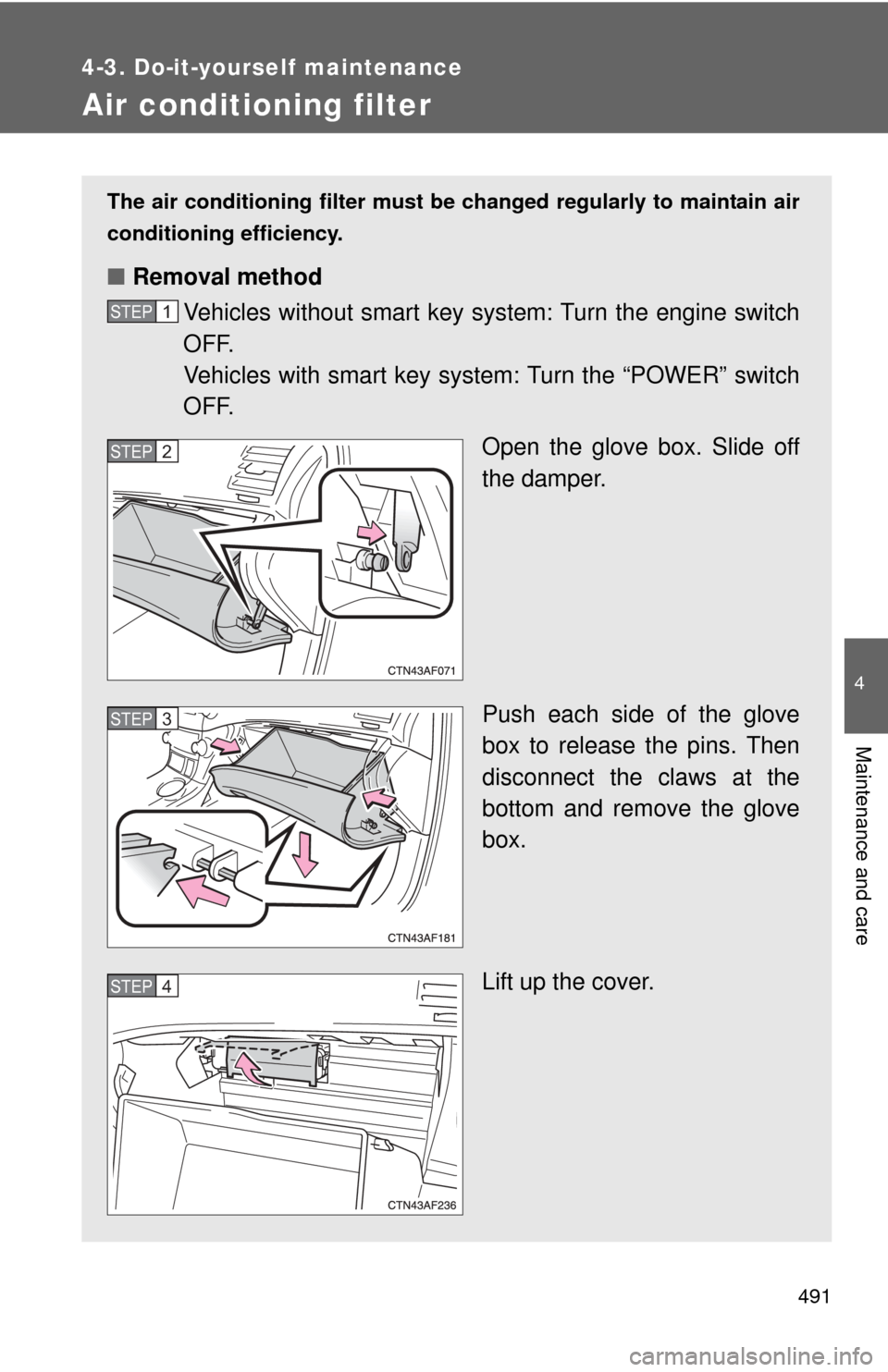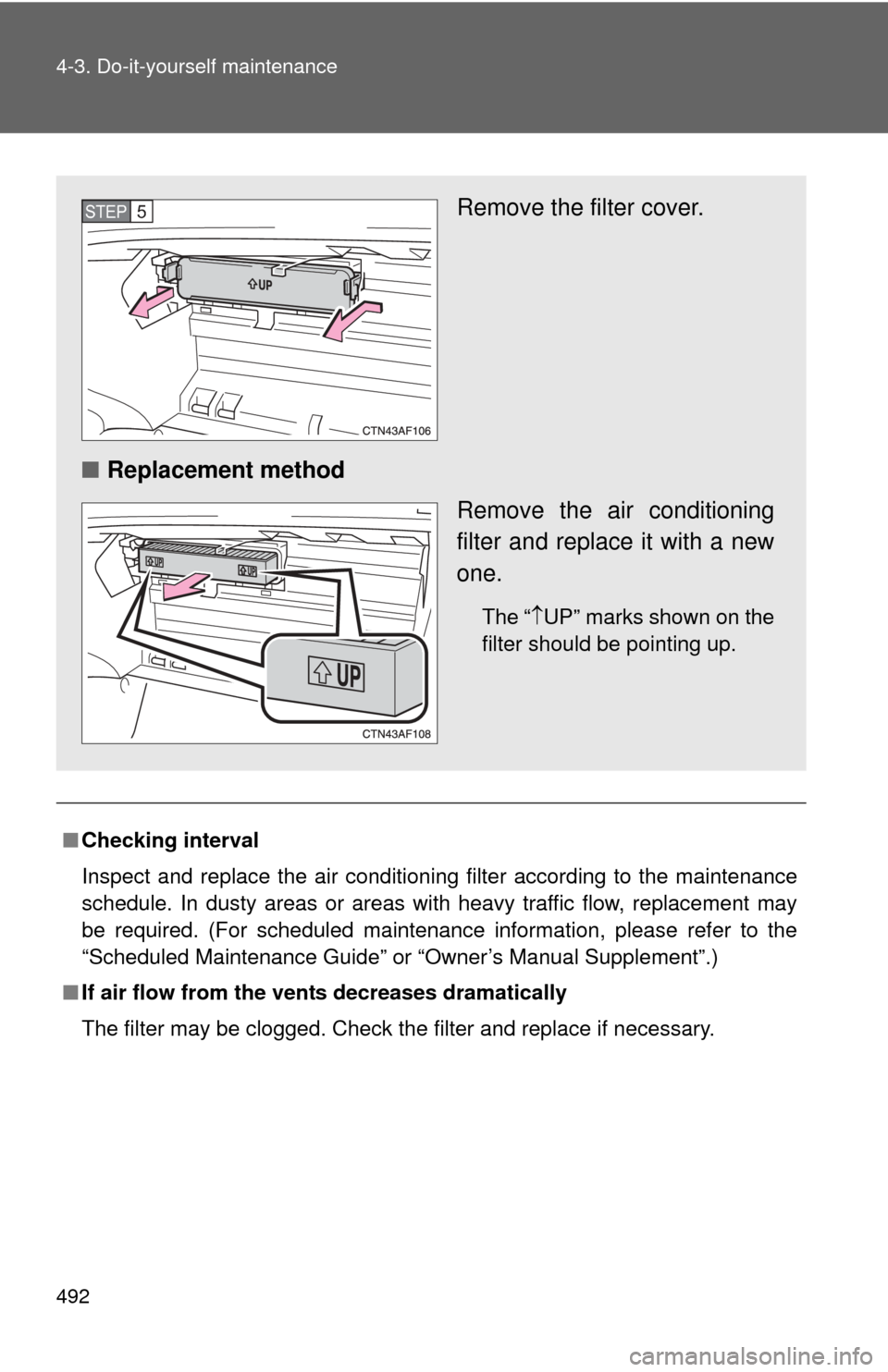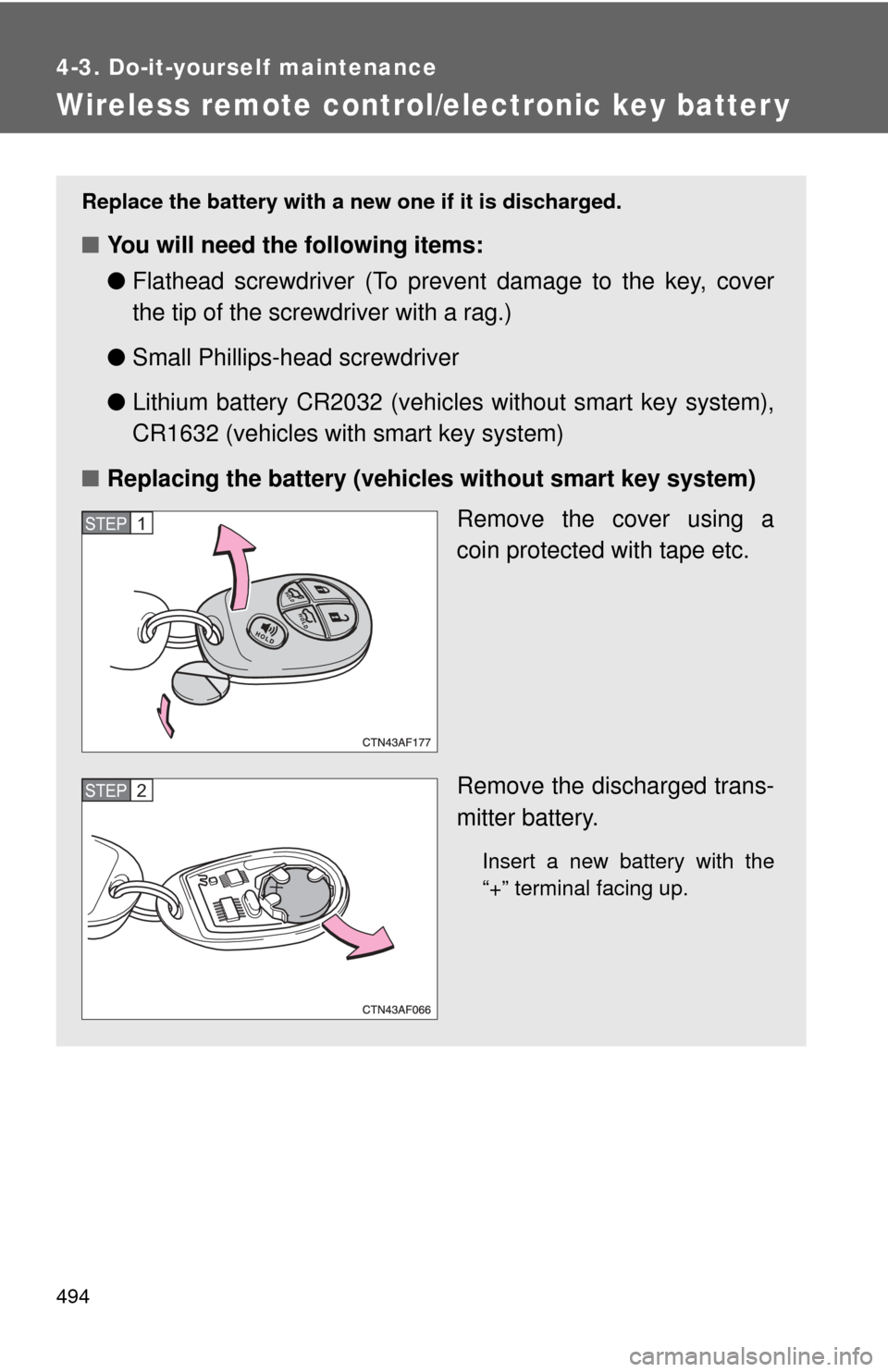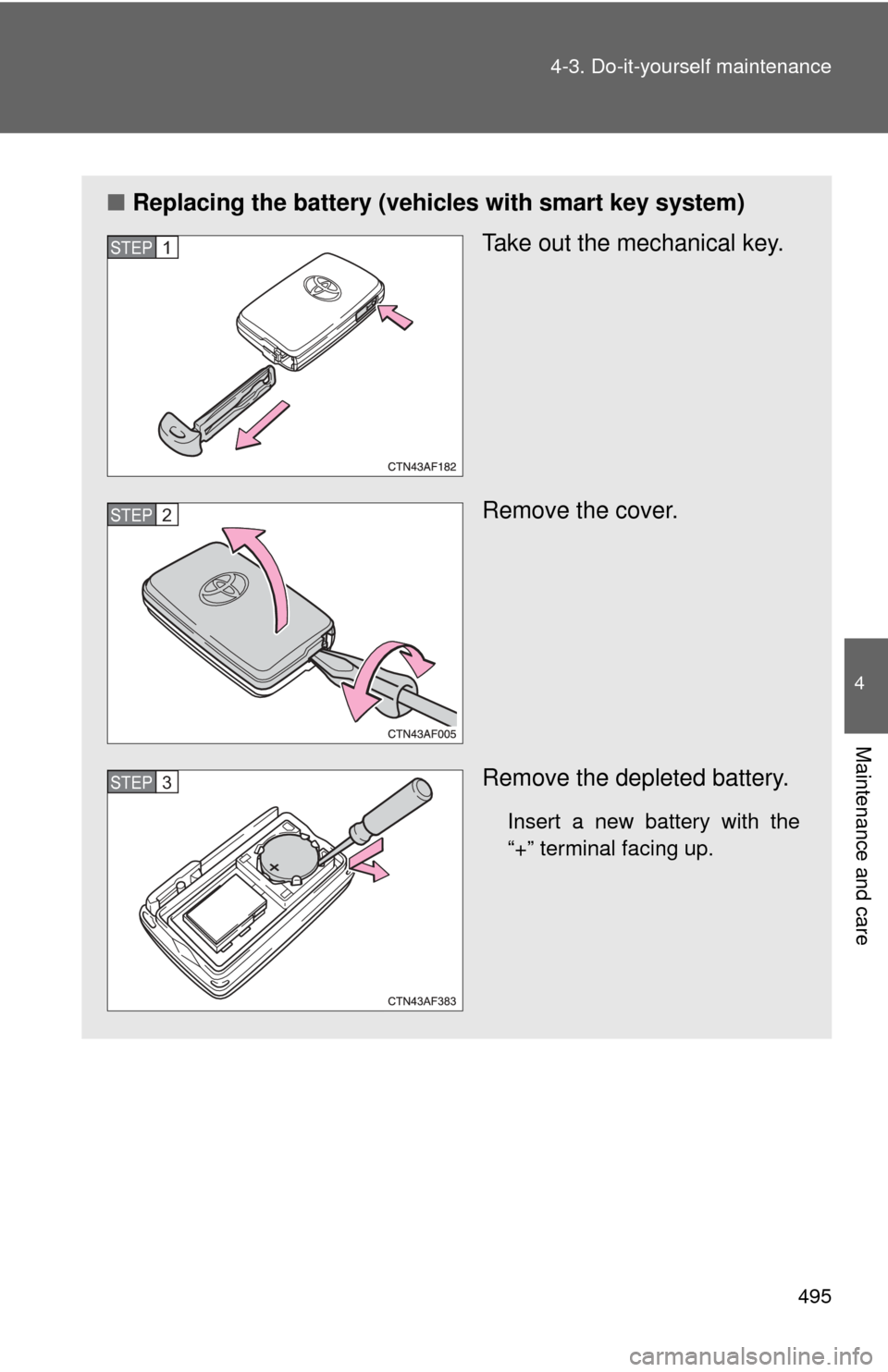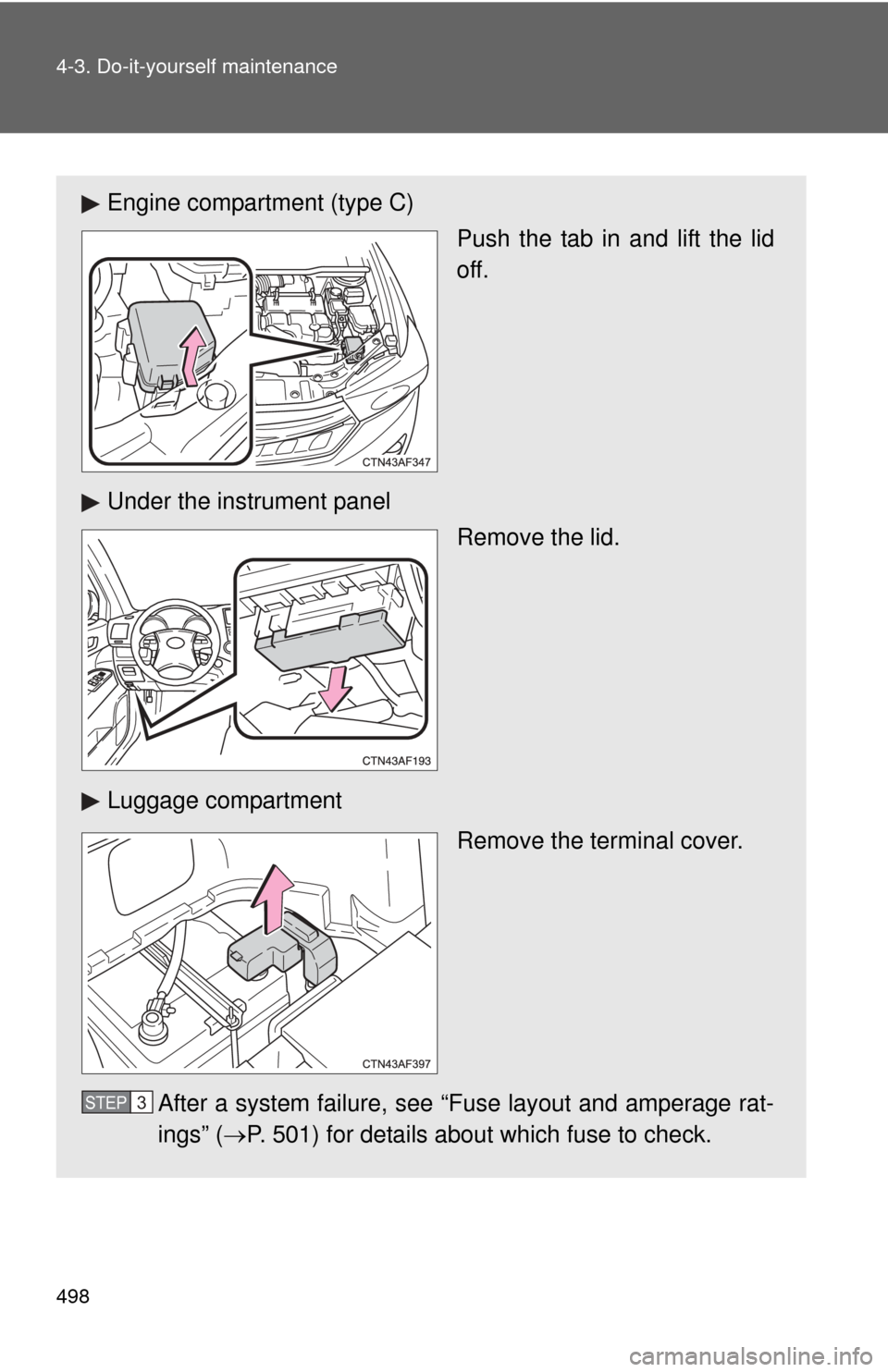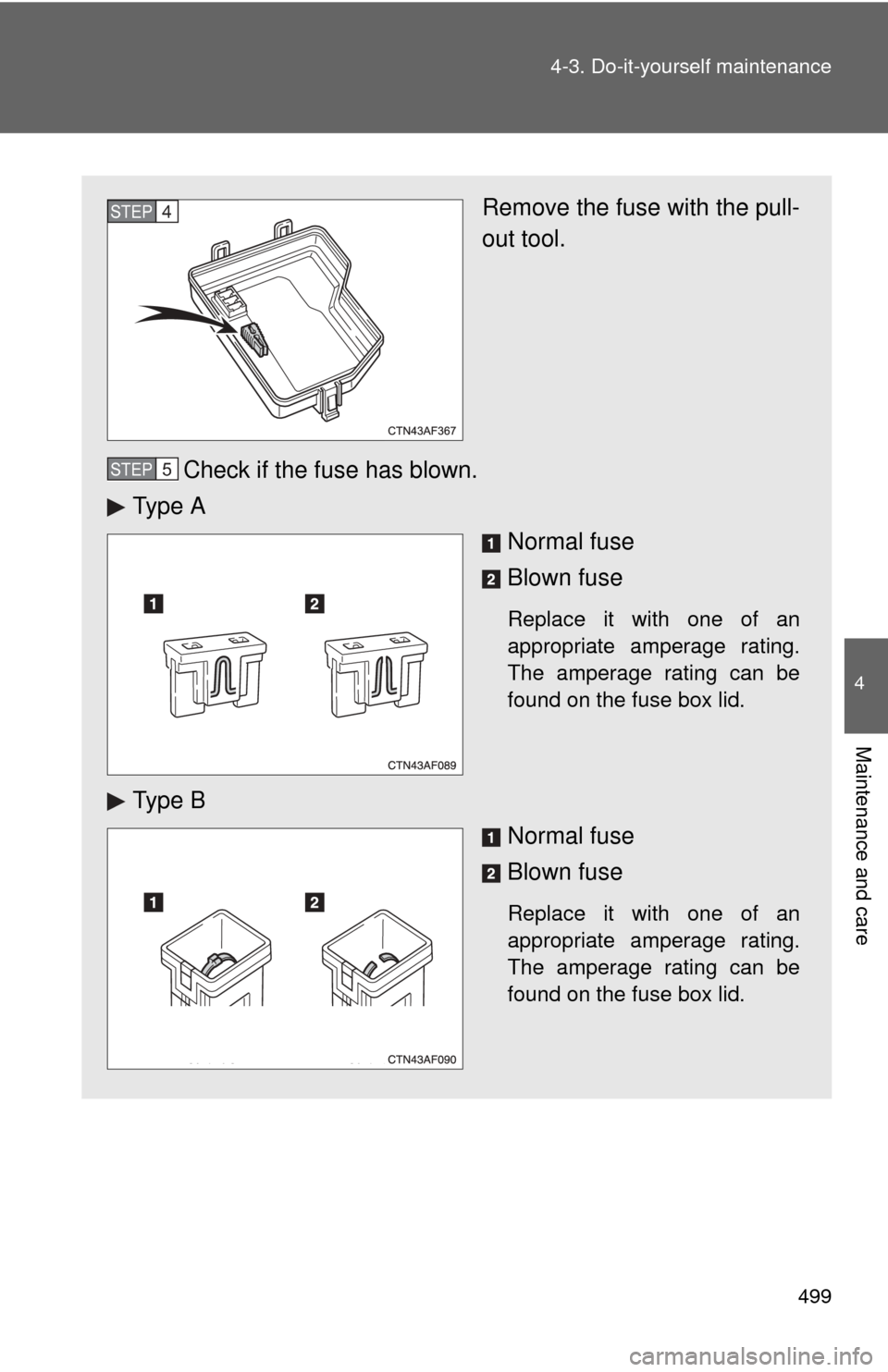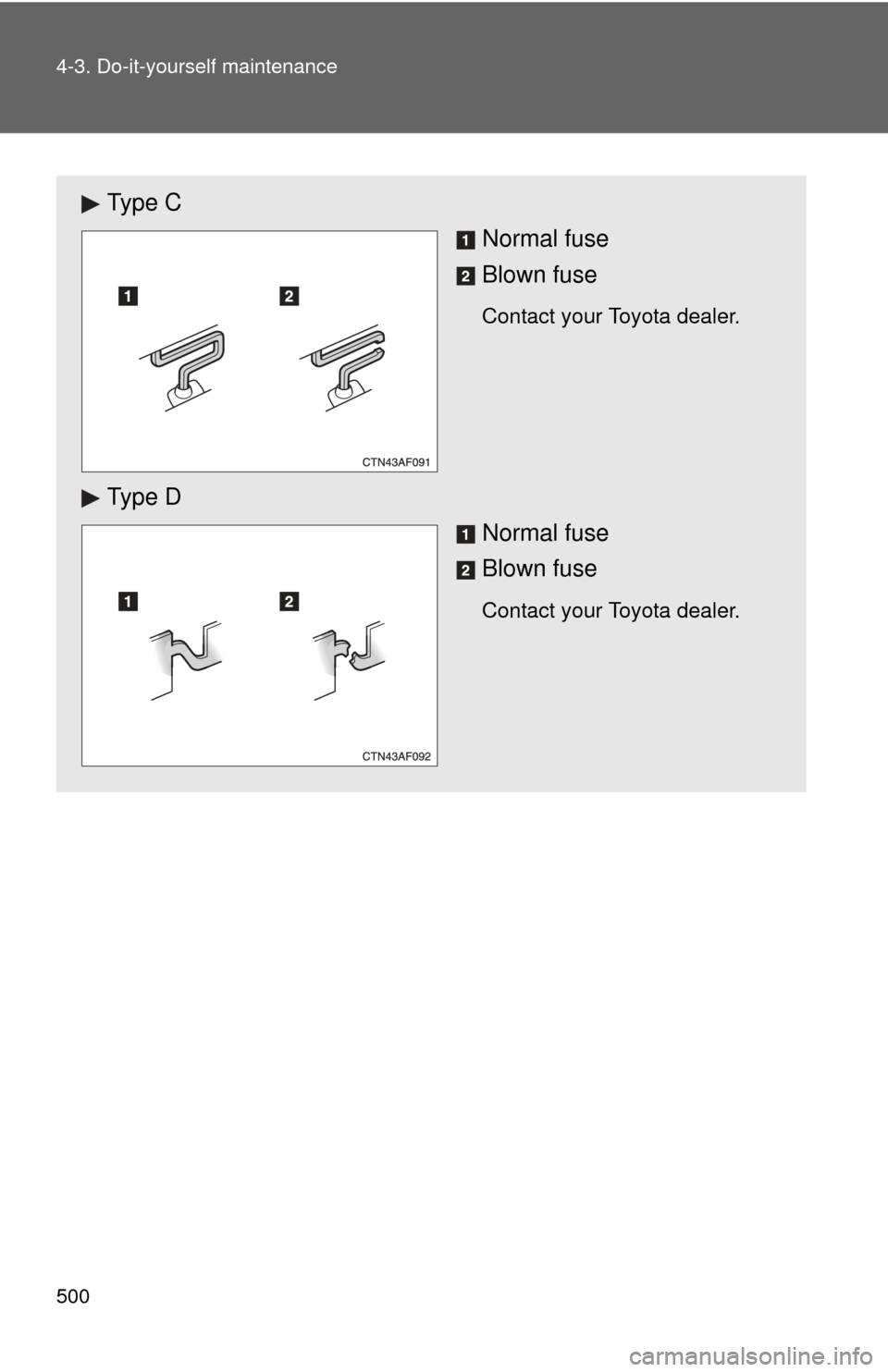TOYOTA HIGHLANDER HYBRID 2012 XU40 / 2.G Owners Manual
HIGHLANDER HYBRID 2012 XU40 / 2.G
TOYOTA
TOYOTA
https://www.carmanualsonline.info/img/14/6448/w960_6448-0.png
TOYOTA HIGHLANDER HYBRID 2012 XU40 / 2.G Owners Manual
Trending: CD player, navigation, TPMS, wiper fluid, Back up, towing, tire size
Page 491 of 636
491
4-3. Do-it-yourself maintenance
4
Maintenance and care
Air conditioning filter
The air conditioning filter must be changed regularly to maintain air
conditioning efficiency.
■ Removal method
Vehicles without smart key system: Turn the engine switch
OFF.
Vehicles with smart key system: Turn the “POWER” switch
OFF.
Open the glove box. Slide off
the damper.
Push each side of the glove
box to release the pins. Then
disconnect the claws at the
bottom and remove the glove
box.
Lift up the cover.
STEP1
STEP2
STEP3
STEP4
Page 492 of 636
492 4-3. Do-it-yourself maintenance
■Checking interval
Inspect and replace the air conditioning filter according to the maintenance
schedule. In dusty areas or areas with heavy traffic flow, replacement may
be required. (For scheduled maintenance information, please refer to the
“Scheduled Maintenance Guide” or “Owner’s Manual Supplement”.)
■ If air flow from the vents decreases dramatically
The filter may be clogged. Check the filter and replace if necessary.
Remove the filter cover.
■ Replacement method
Remove the air conditioning
filter and replace it with a new
one.
The“ UP” marks shown on the
filter should be pointing up.
STEP5
Page 493 of 636
493
4-3. Do-it-yourself maintenance
4
Maintenance and care
NOTICE
■
When using the air conditioning system
Make sure that a filter is always installed.
Using the air conditioning system without a filter may cause damage to the
system.
Page 494 of 636
494
4-3. Do-it-yourself maintenance
Wireless remote control/electronic key batter y
Replace the battery with a new one if it is discharged.
■You will need the following items:
●Flathead screwdriver (To prevent damage to the key, cover
the tip of the screwdriver with a rag.)
● Small Phillips-hea d screwdriver
● Lithium battery CR2032 (vehicles without smart key system),
CR1632 (vehicles with smart key system)
■ Replacing the battery (vehicles without smart key system)
Remove the cover using a
coin protected with tape etc.
Remove the discharged trans-
mitter battery.
Insert a new battery with the
“+” terminal facing up.
STEP1
STEP2
Page 495 of 636
495
4-3. Do-it-yourself maintenance
4
Maintenance and care
■
Replacing the battery (vehicles with smart key system)
Take out the mechanical key.
Remove the cover.
Remove the depleted battery.
Insert a new battery with the
“+” terminal facing up.
STEP1
STEP2
STEP3
Page 496 of 636
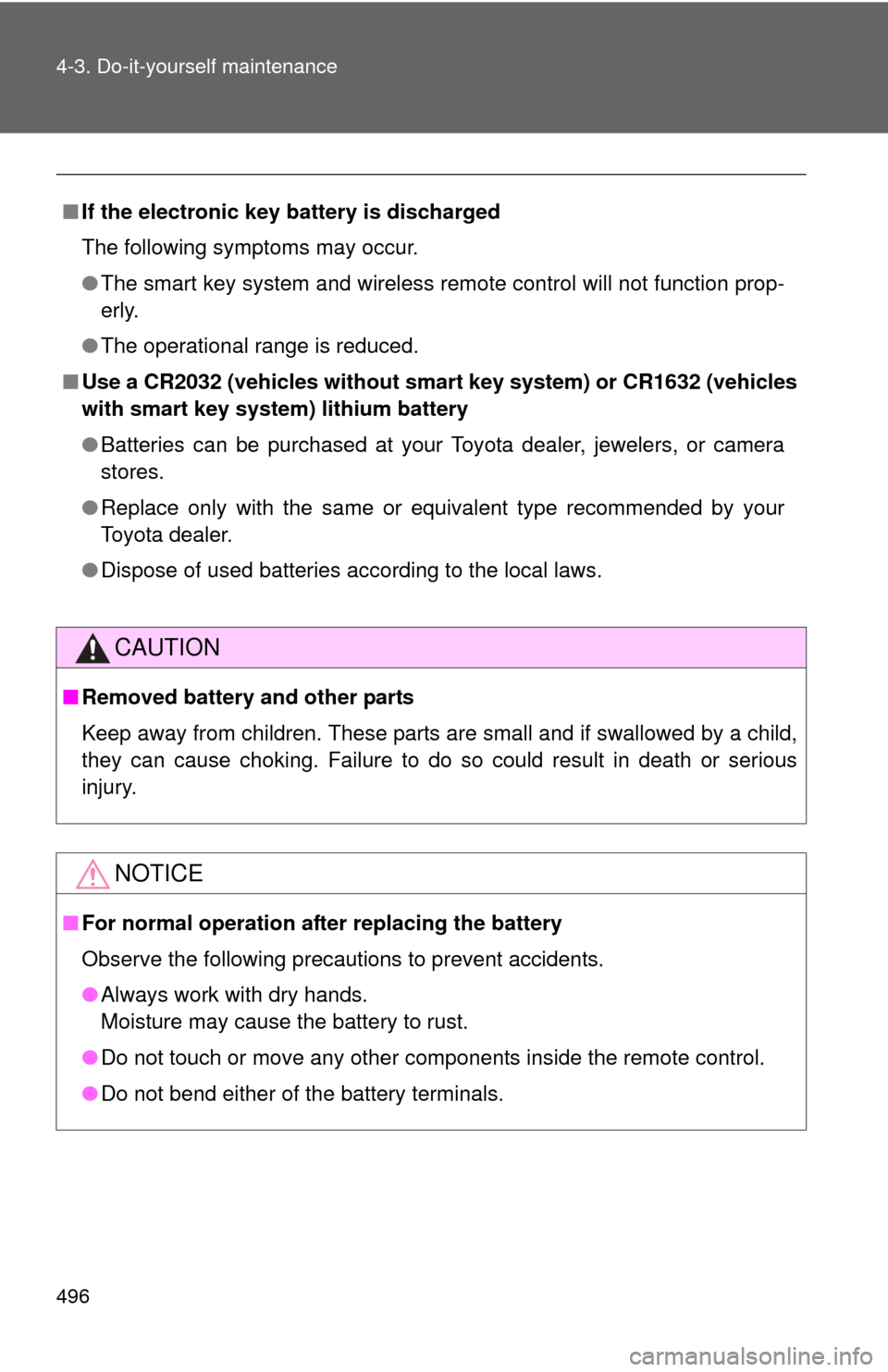
496 4-3. Do-it-yourself maintenance
■If the electronic key battery is discharged
The following symptoms may occur.
●The smart key system and wireless remote control will not function prop-
erly.
● The operational range is reduced.
■ Use a CR2032 (vehicles without sm art key system) or CR1632 (vehicles
with smart key system) lithium battery
● Batteries can be purchased at your Toyota dealer, jewelers, or camera
stores.
● Replace only with the same or equivalent type recommended by your
Toyota dealer.
● Dispose of used batteries according to the local laws.
CAUTION
■Removed battery and other parts
Keep away from children. These parts are small and if swallowed by a child,
they can cause choking. Failure to do so could result in death or serious
injury.
NOTICE
■For normal operation after replacing the battery
Observe the following precautions to prevent accidents.
●Always work with dry hands.
Moisture may cause the battery to rust.
● Do not touch or move any other components inside the remote control.
● Do not bend either of the battery terminals.
Page 497 of 636
497
4-3. Do-it-yourself maintenance
4
Maintenance and care
Checking and replacing fuses
If any of the electrical components do not operate, a fuse may have
blown. If this happens, check and replace the fuses as necessary.
Vehicles without smart key system: Turn the engine switch
OFF.
Vehicles with smart key system: Turn the “POWER” switch
OFF.
Open the fuse box cover.
Engine compartment (type A) Push the tab in and lift the lid
off.
Engine compartment (type B) Push the tab in and lift the lid
off.STEP1
STEP2
Page 498 of 636
498 4-3. Do-it-yourself maintenance
Engine compartment (type C)Push the tab in and lift the lid
off.
Under the instrument panel Remove the lid.
Luggage compartment Remove the terminal cover.
After a system failure, see “Fuse layout and amperage rat-
ings” ( P. 501) for details about which fuse to check.
STEP3
Page 499 of 636
499
4-3. Do-it-yourself maintenance
4
Maintenance and care
Remove the fuse with the pull-
out tool.
Check if the fuse has blown.
Ty p e A Normal fuse
Blown fuse
Replace it with one of an
appropriate amperage rating.
The amperage rating can be
found on the fuse box lid.
Ty p e BNormal fuse
Blown fuse
Replace it with one of an
appropriate amperage rating.
The amperage rating can be
found on the fuse box lid.
STEP4
STEP5
Page 500 of 636
500 4-3. Do-it-yourself maintenance
Ty p e CNormal fuse
Blown fuse
Contact your Toyota dealer.
Ty p e D
Normal fuse
Blown fuse
Contact your Toyota dealer.
Trending: horn, check oil, oil pressure, change language, brake rotor, remove seats, octane
